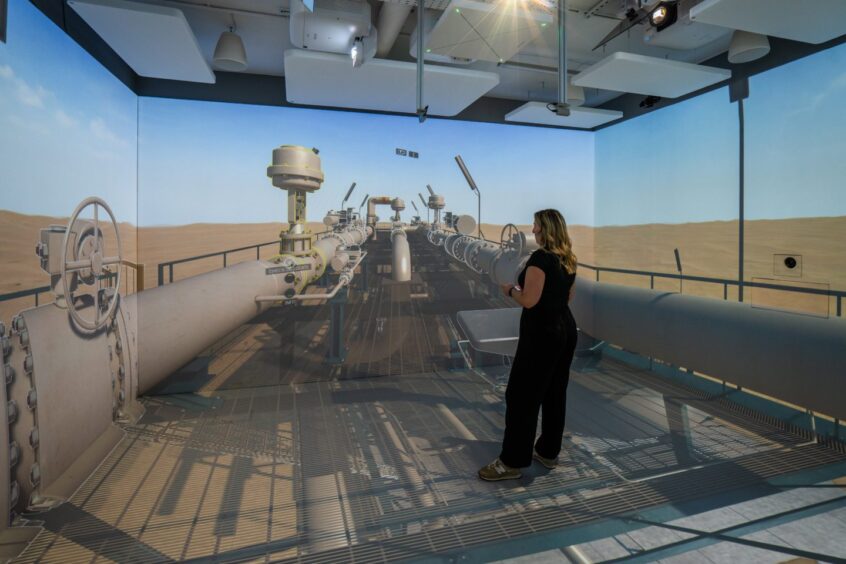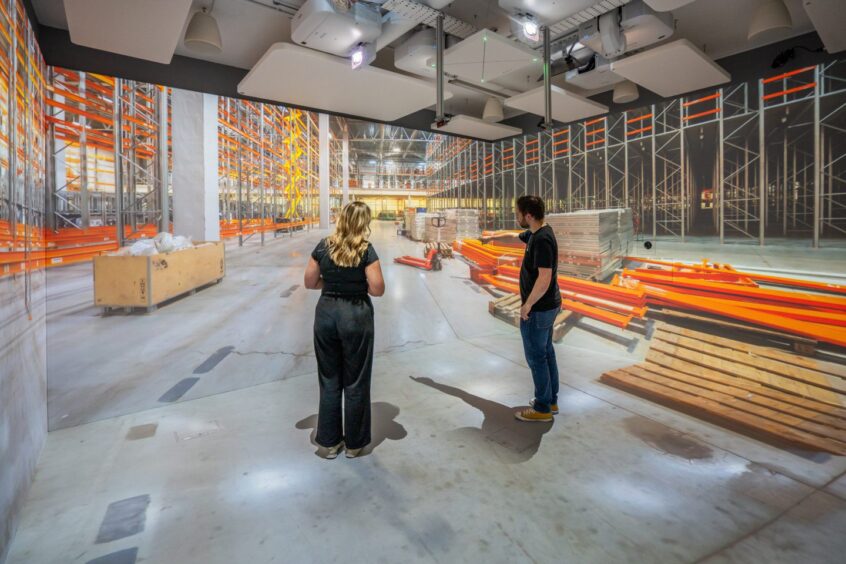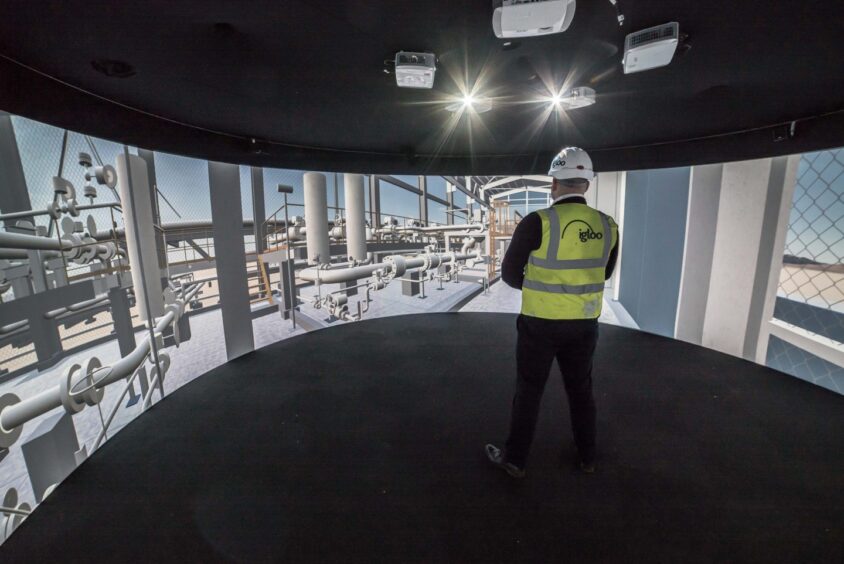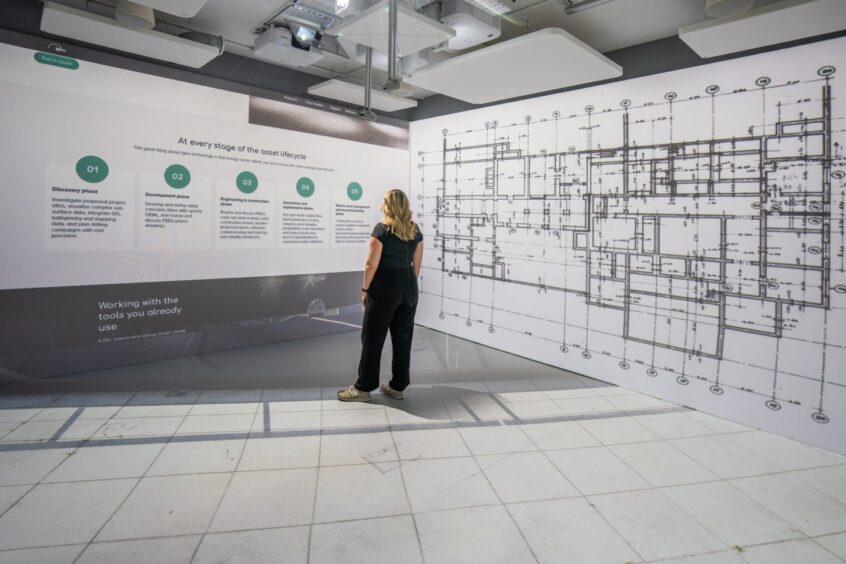
A user-friendly immersive technology is proving its worth in the energy sector with multiple operational benefits that go way beyond visual wow factor.
Every business is always looking for ways to save time and money, and there’s no doubt this is particularly true in the energy sector. What if you could save time and money in engineering, design, and offshore and remote operations, and in addition, have the potential to enhance staff training and engagement too?
It might seem a complex and unrealistic goal, but a UK-based tech company is proving it’s possible with user-friendly immersive technology that’s being increasingly used across the entire energy sector, from oil and gas to renewables.
Igloo Vision is a UK immersive technology company with offices in New York and Melbourne, and another opening in Houston soon.
In basic terms, what Igloo Vision offers is similar to a virtual reality headset, but whole teams of people can step inside the space for a team experience. Igloo Vision’s clients range from the energy industry to education, real estate, retail and even to the likes of Disney, all of which is testament to the versatility of this award-winning tool.
What major players in the energy sector, like BP, Exxon Mobil and AtkinsRéalis are discovering, is just how useful an ‘Igloo’ shared virtual reality space is in every aspect of their business, from staff training and site inductions to engineering and design.
View 3D and VR content in an immersive team environment
Intrigued? We certainly were. We spoke to Kerry Head, CEO, and James Sheridan, head of Asia Pacific at Igloo Vision to find out more.
Kerry gave us an insight into what Igloo Vision can offer, she said: “Essentially, we work with companies that use 3D content or VR content. Traditionally, all they can do with that content is look at it via a headset which is very isolated experience and not particularly good for team tasks, or they can view it on a flat screen which defies the whole purpose of it.
“We free that content from behind a headset and liberate it from behind a flat screen. We allow them to put that content in a shared environment that can be used as a team.”
In addition, the Igloo system is totally content agnostic. So, for example, for engineers within the energy sector that already use 3D design and engineering tools, this content can be easily shipped into the Igloo system.
Easily integrates with existing software and content
Kerry has found there tends to be three main uses that energy clients are finding for the Igloo system. She added: “One aspect energy clients are using Igloo for is visualisation. For example, looking at an unbuilt facility as part of the planning stages. Reviewing the design and how it will work, detecting any clashes or issues as a team before starting the construction phase.
“Another aspect of it is simulation, this is used primarily for training purposes. A lot of our work, especially within the energy sector, is employee induction training. Rather than sending people onsite, you can put them in a simulated version of the facility.”
Kerry continued: “Thirdly, it’s also very much used in the energy sector on operations and maintenance programmes or asset management, where a client is trying to reduce the number of man hours spent in remote facilities.
“You can have 360-degree footage taken at the remote facility and then beamed onto a command centre back at base. That means you can have one or two people from a maintenance crew onsite, and all the subject matter experts are back at base.”
Igloo Vision reduces travel to remote facilities and more
James, who is involved closely with energy clients working in the Asia-Pacific region, gave us some real-life examples of the ways in which clients use their Igloo system. He said: “In the design of an automated and unmanned refinery, our client was able to do all the placement of the fire extinguishers and the signage using a virtual model in the Igloo system before the refinery had even been built.
“So, instead of waiting till it’s built and sending a team there, they had it all planned and signed off in advance which saved a substantial amount of money.”
James continued: “We’ve also found with our clients, if a deployment is required under the ocean for example, and lasts two to three weeks, using Igloo as a tool to manage that can shave two or three days off of that. Saving those two or three days equates to a huge saving financially.”
Conduct hands-on training in an immersive environment
James said clients have found the Igloo system particularly useful for staff site inductions. He said: “For site induction tours, many of these are in places where it can be exceptionally hot, and it’s just not a comfortable environment to go and spend a lot of time doing an onboarding session.
“The noise can be another issue. Sometimes people need to wear double ear protection so there’s no way they can hear each other, they can’t ask questions, they can’t have a discussion.
“One of the biggest changes clients have found doing these tours virtually is that people engaged a lot more. They can take time to ask questions and drill down into things. Needless to say, there is also a saving attached to not having to send 100 people out to site.”
One surprising benefit fed back to the Igloo team when clients used the Igloo for staff inductions and training is the ability to use real life tools in the immersive environment. James commented: “Being able to use props and real-world tools is a massive thing. You can’t do that with a VR headset. The naturalness of it is the big thing. The situational awareness and seeing the big picture is a huge plus.”
The Igloo can be part of your everyday workflows
Kerry is keen to stress that when a client starts using the system, the user friendly and content agnostic nature of the Igloo means that they find a huge number of uses and benefits, some of which they may not have considered initially.
“People see an Igloo as a wow factor, perhaps a novelty for presentations, but it goes beyond that,” said Kerry. “When clients use it as part of their everyday ways of working the savings can become pretty significant, pretty quickly. When it comes to remote site visits, there are obviously travel savings, but it also applies to your net zero carbon goals too, for example.
“A lot of our clients also find that, yes, it’s great for immersive content, but it’s also great for any other content as well. We’ve all been in meetings where there is one screen, and dashboards and spreadsheets are layering up and being switched between. When you have your meeting in the Igloo, it gives space. All the different data and content can be easily seen and accessed.
Kerry added: “That’s a use we didn’t really anticipate back in the early days, but people are now using it for that a lot now.”
Available in off-the-shelf and custom retrofit options, an Igloo is simple to set up and training is provided to ensure you can make the most of the system. Kerry finished by saying: “The Igloo goes way beyond the wow factor. We’re also way beyond hypotheticals with it. Companies all over the world are using it on a daily basis.”
She added: “We want our clients to make the most of it. The system is so flexible that once it’s in place and people start using it, they find all sorts of uses for it. With many of our clients the system is booked out all day every day, and that’s exactly what we want them to achieve.”
Igloo shared immersive spaces are easy to specify, buy, install, and operate. Choose an off-the-shelf structure, a custom build, or transform an existing room to discover how Igloo can enhance your operations.
Recommended for you

 © Supplied by Igloo Vision
© Supplied by Igloo Vision © Supplied by Igloo Vision
© Supplied by Igloo Vision © Supplied by Igloo Vision
© Supplied by Igloo Vision